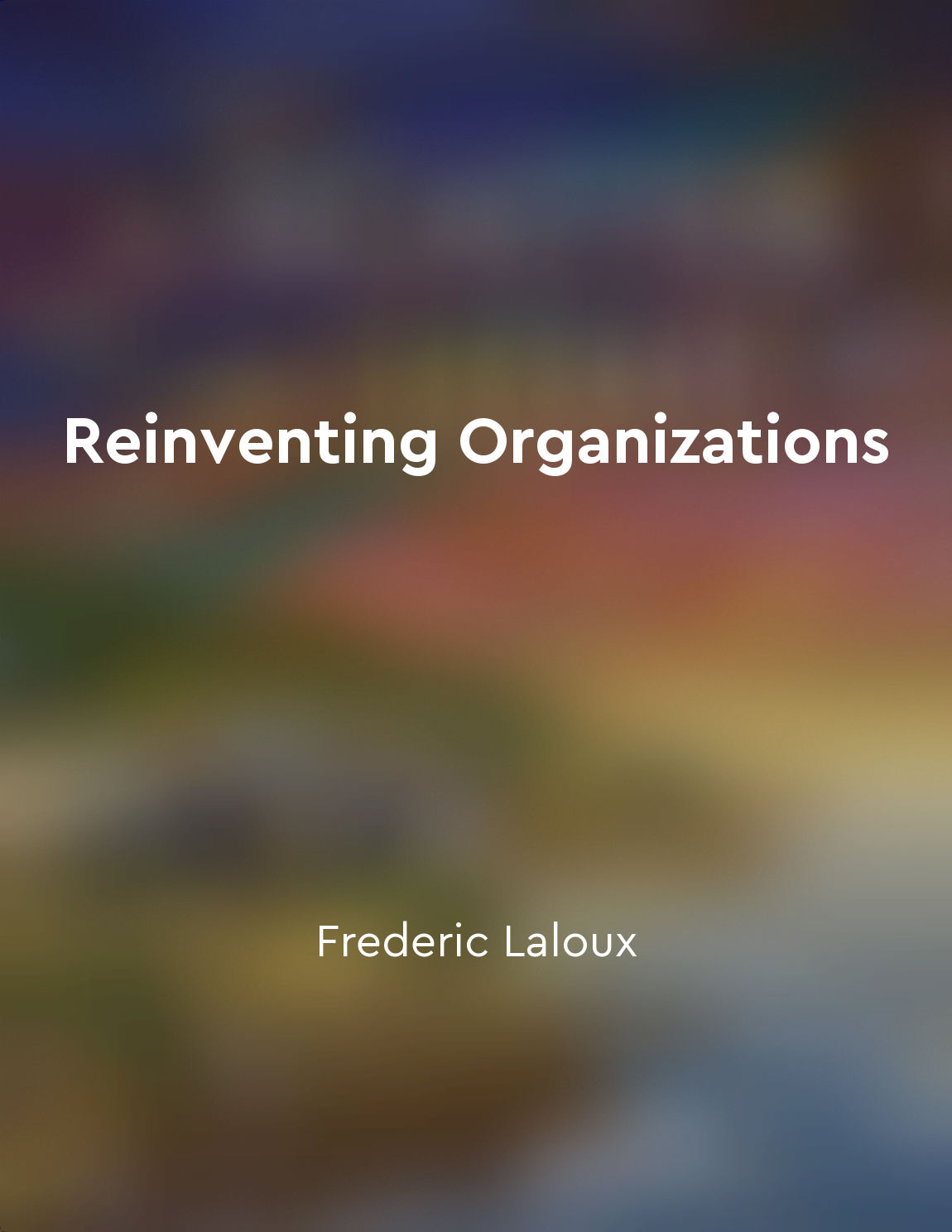Organizations evolve through different stages of development from "summary" of Reinventing Organizations by Frederic Laloux
In the world of organizations, we can observe a fascinating pattern - they seem to evolve through different stages of development. This evolution is not random or chaotic but follows a predictable trajectory, much like the stages of growth that living organisms go through. Each stage has its own characteristics, challenges, and opportunities, shaping the way the organization functions and how people relate to each other within it. At the first stage, organizations operate like tribes, where power is based on physical strength or lineage. This tribal stage is characterized by a strong sense of loyalty and belonging, with leaders who are seen as protectors and providers. Decision-making is typically centralized, with a focus on survival and meeting basic needs. As organizations grow and mature, they often move into a more hierarchical stage, where power is based on authority and position. In this stage, there is a clear hierarchy of roles and responsibilities, with rules and procedures governing how work is done. The focus shifts to efficiency and effectiveness, with a strong emphasis on achieving goals and targets. However, as the complexity and interconnectedness of the world increase, organizations may find that the hierarchical model is no longer sufficient to meet the demands of the modern age. This realization can lead to a transformation towards a more decentralized and agile way of working, where power is distributed and decisions are made closer to where the action happens. This stage is marked by a greater emphasis on collaboration, innovation, and adaptability. In this new stage of development, organizations begin to see themselves not as machines that need to be controlled and optimized but as living systems that are constantly evolving and adapting to their environment. Leadership becomes more about creating the conditions for self-organization and emergence, rather than imposing top-down directives.- The journey of organizational evolution is a continuous one, with each stage building on the strengths and lessons of the previous ones. By understanding and embracing this natural process of development, organizations can unlock new levels of potential and create environments where people can truly thrive and contribute their best.
Similar Posts
Flexibility is important in adapting to changing power dynamics
Flexibility plays a critical role in navigating the intricate web of power dynamics. In a world where power structures are cons...
Use language to inspire and motivate team members
To create a motivated team, leaders must be intentional about the language they use. Words have power - they can either inspire...

Leaders in Teal organizations serve as catalysts for change
In Teal organizations, leaders play a unique role as catalysts for change. They do not lead through traditional top-down direct...
Participation and sharing are key components of new power
The dynamics of power are shifting in the digital age. In this new landscape, participation and sharing have become vital compo...
They were able to resist the Spanish invasion
The Spanish invasion was met with unexpected resistance. The invaders, with their organized armies and hierarchical structures,...

Leadership is no longer seen as a solution
The prevailing sentiment is that leadership no longer carries the promise it once did. The idea that leadership is a solution h...

Organizations can be viewed as living systems
In the world of traditional management thinking, organizations are often seen as machines: predictable, controllable, linear. B...
The internet has enabled new forms of decentralized organization to emerge
The internet has fundamentally changed the way organizations operate. With the rise of decentralized networks, traditional hier...
It limits the impact of any one individual
The concept of a decentralized organization is that no single individual holds all the power or influence. Rather, decision-mak...

